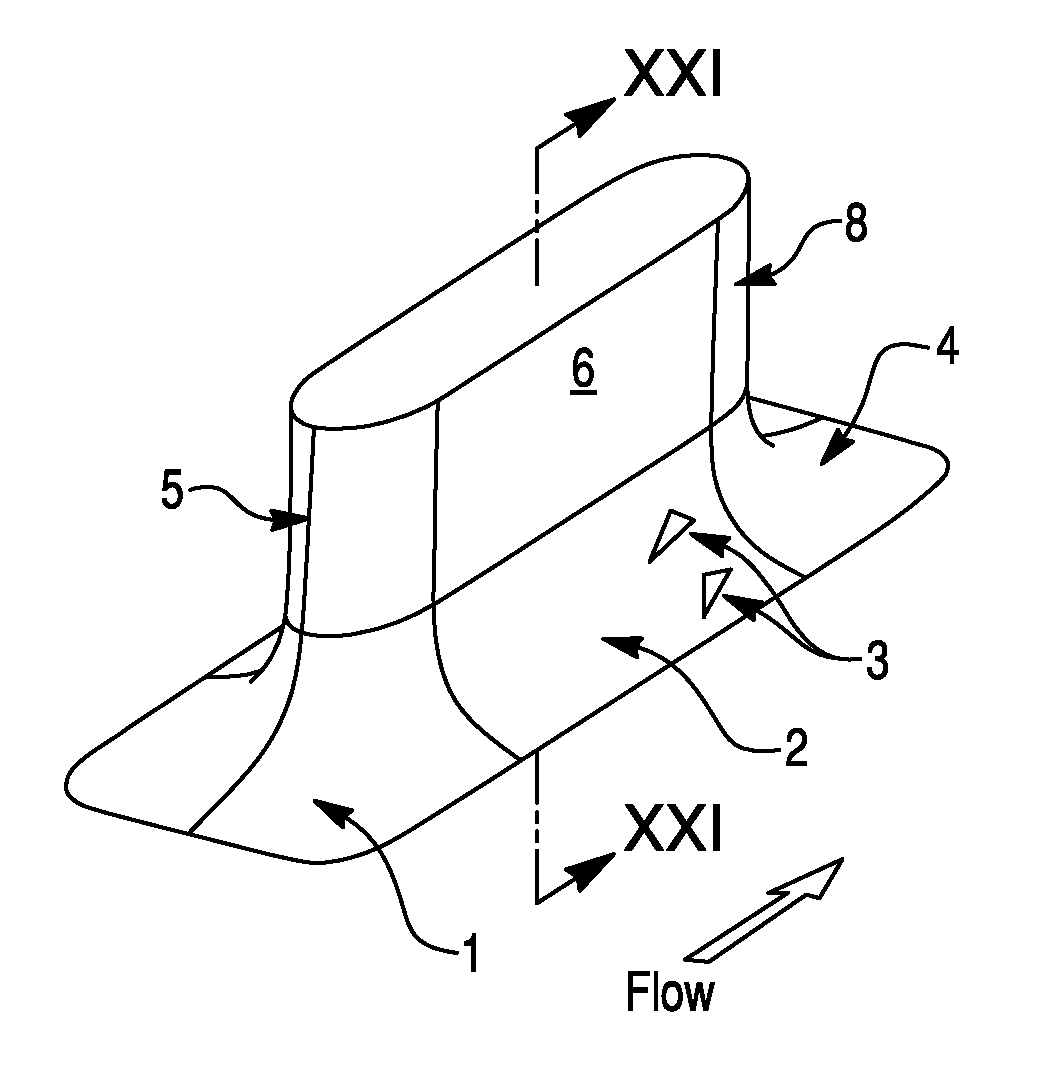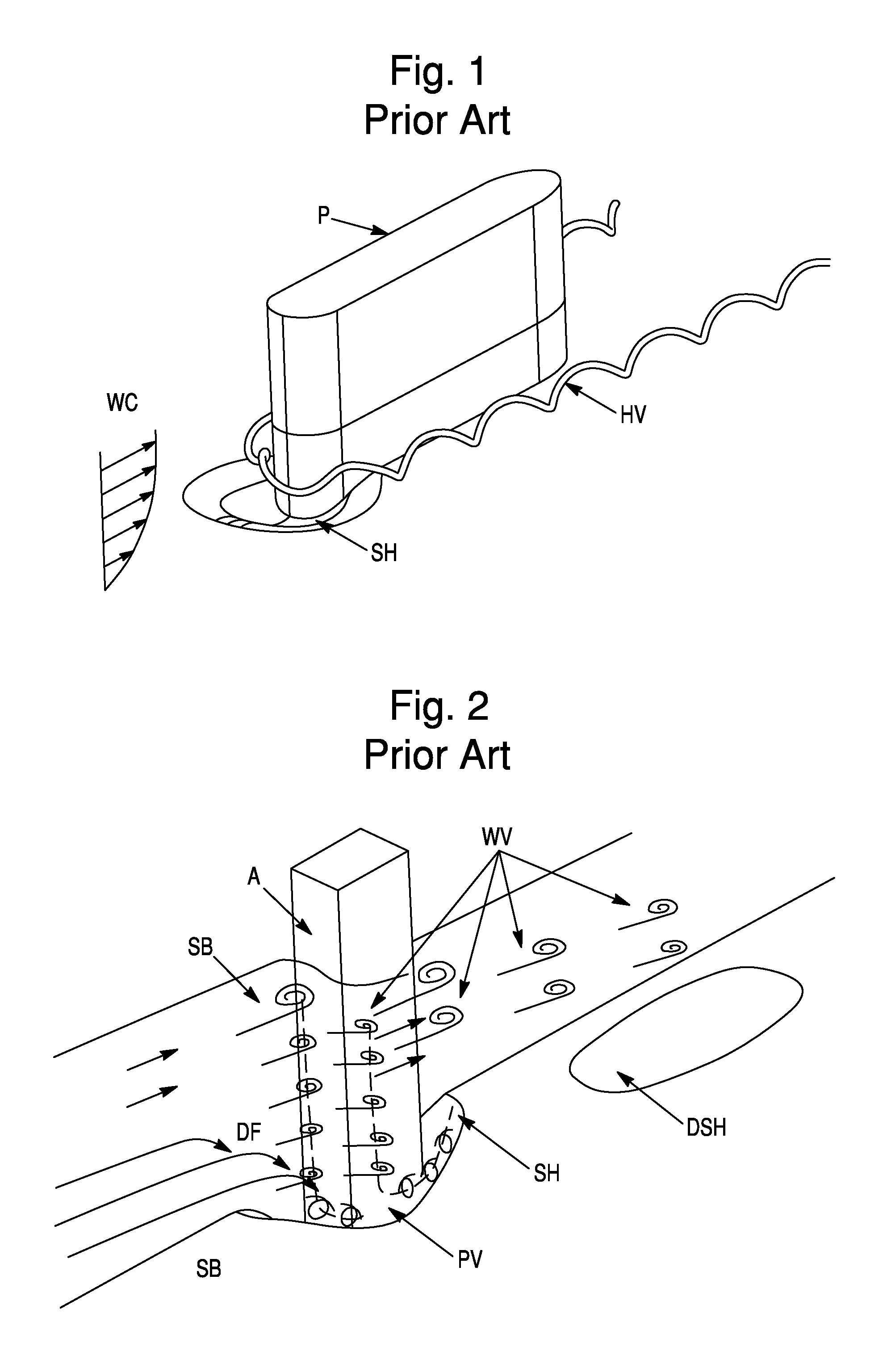Bridge pier and abutment scour preventing apparatus with vortex generators
a technology of vortex generator and abutment pier, which is applied in the field of civil engineering, hydraulic engineering, soil and water conservation, can solve the problems of scour, highway bridge failure, and significant cost and risk in the maintenance of many bridges throughout the world, and achieve the effects of preventing the separation of the downstream part, eliminating the flow leading, and reducing the 3d separation
- Summary
- Abstract
- Description
- Claims
- Application Information
AI Technical Summary
Benefits of technology
Problems solved by technology
Method used
Image
Examples
Embodiment Construction
[0042]Since bridge piers and abutments are the most common hydraulic substructures, in the following description we use bridge piers and an abutment as examples for proof of concept; the local vortex preventing scour countermeasure technique described here can be extended to other hydraulic substructures.
[0043]A global view of the invention and its components is shown in FIGS. 5 and 6 for bridge piers and an abutment. FIG. 7 contains a detailed view of the vortex generator devices used in the invention. The components include:[0044]1. Hyper-ellipse convex-concave bridge pier or abutment fairing nose[0045]2. Faired prismatic apron[0046]3. Specially designed vortex generators[0047]4. Hyper-ellipse downstream fairing[0048]5. Faired elliptical pier or abutment nose[0049]6. Existing bridge pier or abutment[0050]7. Interlocking key between sections of the fairing[0051]8. Faired elliptical pier downstream surface or stern[0052]9. Existing or faired circular pier nose[0053]3a Vortex generat...
PUM
 Login to View More
Login to View More Abstract
Description
Claims
Application Information
 Login to View More
Login to View More - R&D
- Intellectual Property
- Life Sciences
- Materials
- Tech Scout
- Unparalleled Data Quality
- Higher Quality Content
- 60% Fewer Hallucinations
Browse by: Latest US Patents, China's latest patents, Technical Efficacy Thesaurus, Application Domain, Technology Topic, Popular Technical Reports.
© 2025 PatSnap. All rights reserved.Legal|Privacy policy|Modern Slavery Act Transparency Statement|Sitemap|About US| Contact US: help@patsnap.com



